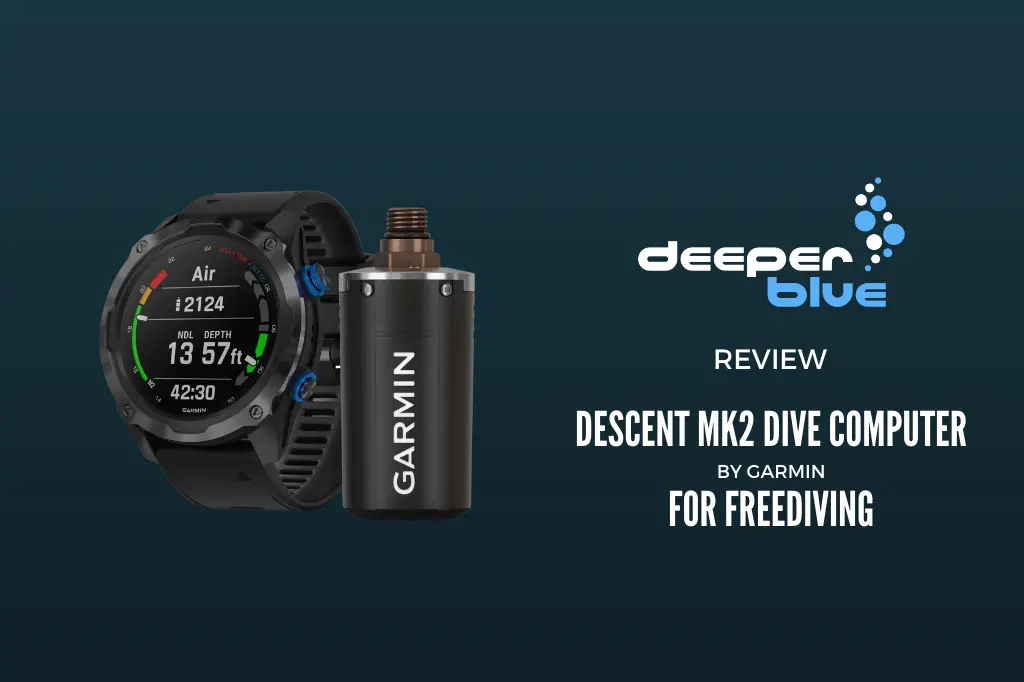When I heard that the opportunity had arisen to review the new Garmin Descent Mk2 dive computer, I nearly fell out of my seat in excitement. I had heard other freedivers’ impressions of the Mk1, but had never seen it in person, so I was ecstatic to try out the newest model. The main specifications of the Mk2 that thrilled me the most to try out were the heart rate measurements, the GPS function (as my mooring lines in Xiao Liuqiu, Taiwan are placed 3-5m/10-16ft underwater), and the smartwatch components, as I was already in the market for one.
First Impressions
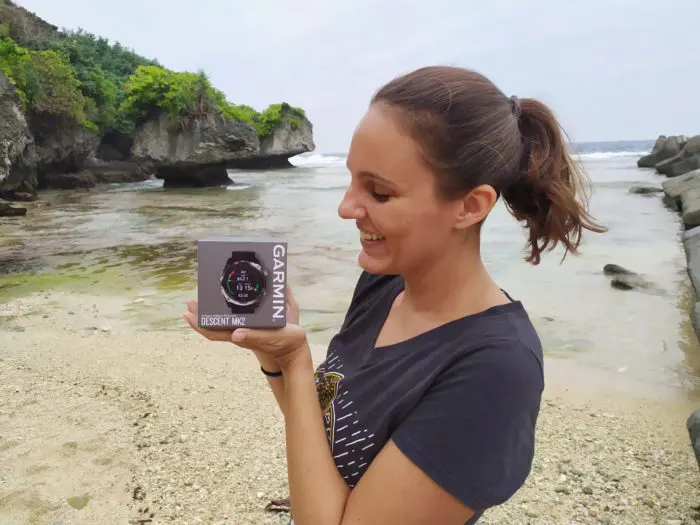
The Garmin Descent Mk2 is a pleasure to look at. Really.
The details are incredible: the stainless steel bezel, the easily-accessible buttons with a solid feel to them, the high-resolution screen with vivid colors that are visible even in direct sunlight, and the silicone band with closely-placed notches that ensures a perfect fit. The watch faces are completely customizable and give you the option to see plenty of information directly on the screen, such as calories burned, heart rate, date, day of the week, steps, battery life, sunrise time, second time zone, weather, etc.
You can even change the background color, accent color, and have the option of downloading more watch faces from the ConnectIQ™ Store. The Mk2 also has QuickFit™ watch band compatibility to easily change watch bands with no tools required.
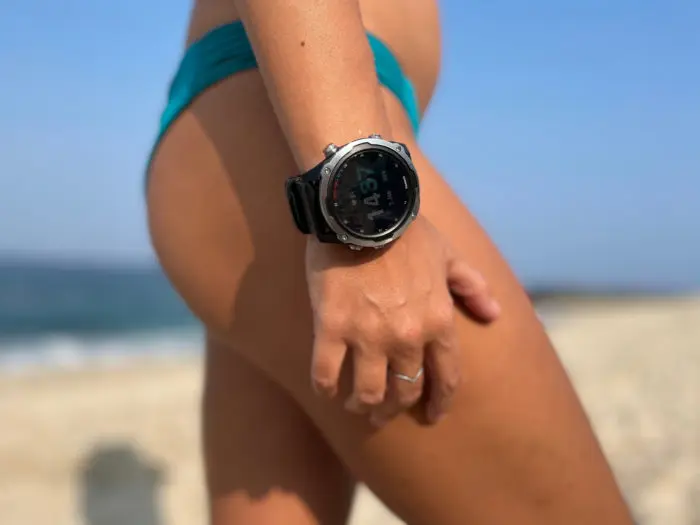
While the interface is absolutely vibrant, the menu can be a bit overwhelming at first, and takes a while to get used to. The buttons have placements that do not feel natural at first, but over time become second nature. The size of the Mk2 itself is quite large; I have very small, thin wrists, and the dive computer might feel a bit overwhelming for everyday wear for those with smaller wrists, however this does not stop me from wearing it daily, even on non-diving days.
GPS and Compass
In Xiao Liuqiu, Taiwan, all the mooring lines in the ocean are located about 3-5m (10-16ft) underwater. This means that a freediver needs to remember surface markers or use GPS to find a place to attach their buoy, which is not always reliable. Thankfully, searching for and saving specific diving spots on the Garmin Descent Mk2 is especially easy. Connecting to GPS is almost instantaneous, and saving a new location requires a couple of presses of a button and almost no effort. The screen for locating a particular point on the map is very detailed and clear, and spots can be renamed directly on the device and marked with separate icons to differentiate dive sites.
I was very happy to find out that if I have the coordinates of a dive site, I can input them into the Mk2 and it will navigate me to the destination. I cannot save the location directly to my dive computer without being physically present at the dive site, but at least I can locate a site and save it afterwards. One thing I would love to see from an update is the ability to share saved dive locations directly with another Garmin user, which Garmin is working on. These are definitely not drawbacks, just minor additions that would certainly be welcome.
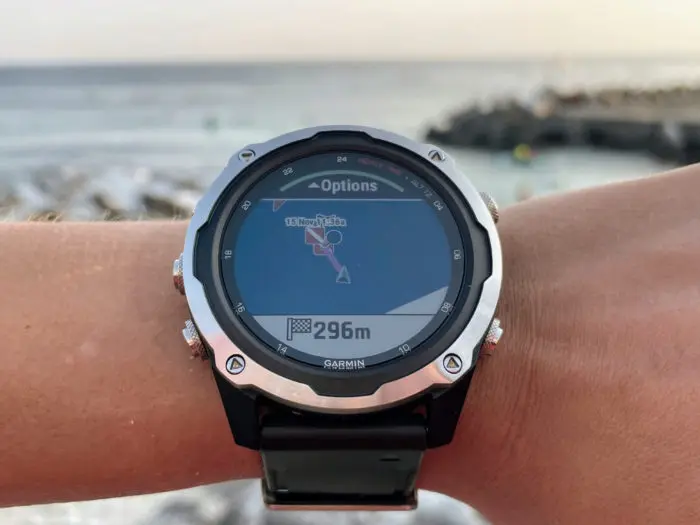
I also would not mind a different interface for locating dive sites as the GPS arrow is quite big and can sometimes be difficult to determine exactly which direction to go towards, especially as you get closer to the dive site and are not able to zoom into the map. I was informed that Garmin is also working on improved navigation experience purpose-built for divers in the water and on location sharing experience, so I look forward to these future updates!
Notifications, Alerts, and Logs
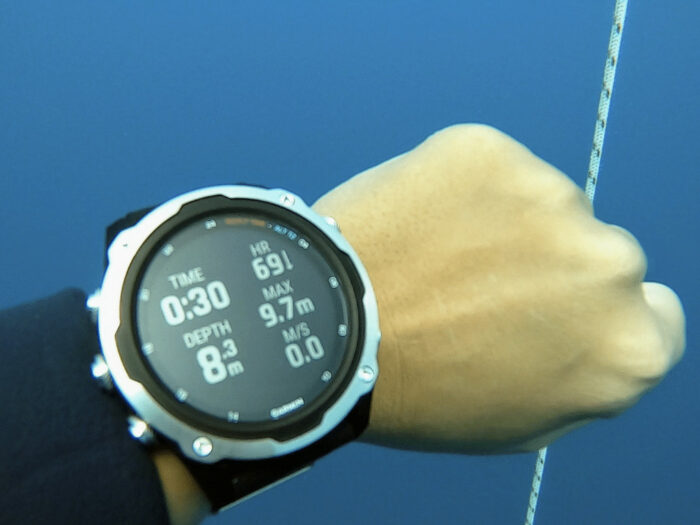
The Descent Mk2 has an excellent apnea mode data screen that has all of the relevant information a freediver needs with no distracting extra information or colors. The main screen has the current surface interval time with the last dive’s dive time, maximum depth, and water temperature. The next screen has the current time and heart rate, and the last screen is a map with your location on it. Simple, easy to navigate, and a pleasure to read with the large font and simple layout.
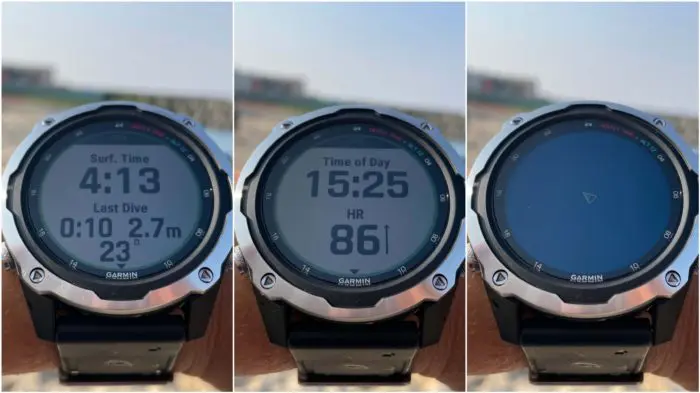
One of my favorite features is the choice between depth notifications that are audible, haptic, or both. I can hear the audible depth notification clearly when I dive and feel it vibrate on my wrist at the same time, which means I never miss a depth notification, of which you can set multiple. Having the Mk2 on means that I no longer have to tuck my dive computer into my hood to hear an alarm so I do not risk missing my freefall or mouthfill charge notification.
Along with being able to set multiple depth notifications, you can also set time notifications, which can be useful for hangs or for spearos on the hunt. One drawback is that the surface interval timer is set by the user, so there is no formula for surface interval timing that is calculated based on the previous dive’s data, which would be a helpful addition.
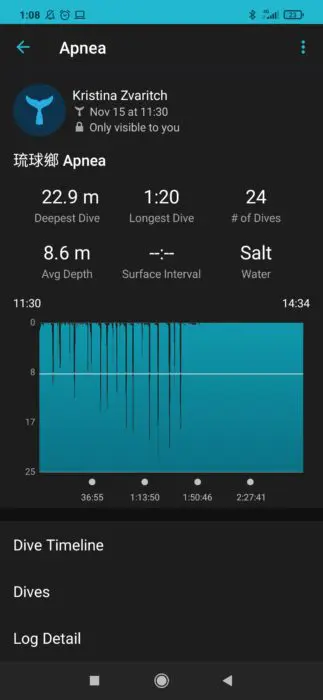
The dive log is available to look at on the watch, but I prefer to look at it on the Garmin Dive™ application. It is thoroughly detailed, has timelines of depth, heart rate, and water temperature that you can overlay to see all of the different parts of the dive at once, and is all organized in a clear manner. I can even see the calories I burned during a dive! The only drawback is that I cannot see my average ascent speed for the entire dive, which would be helpful for training dives, although Garmin says they are working on this aspect for upcoming enhancements.
Battery Life and Connectivity
The battery life of the Descent Mk2 is the most impressive I have seen out of any rechargeable dive computers, including smartwatches and fitness trackers in general. I have no problem getting two weeks out of the battery, even with it connected to my phone, and can easily have an entire week of battery life with frequent freediving sessions. The connectivity is also very impressive; getting a GPS signal is almost immediate with advanced satellite connectivity, and the Mk2 has no problem staying connected via Bluetooth and syncing to my Android phone all day.
HR Connectivity
The heart rate measurement on the watch seems quite accurate on land and in water. Motion and watch fit affect wrist-based optical HR solutions, so I was advised to wear the Descent as tightly as possible on my wrist for best results during a dive, which means having to roll up longer wetsuit sleeves. You also have the option to purchase the HRM-Swim chest strap, which can be used up to 5ATM and stores the heart rate data after a dive at the surface.
I do not have this strap yet, so I cannot comment on it specifically, but I do love being able to see my heart rate at the surface before a dive and watching it as I do warm-up hangs, which I find extremely impressive. It is marvelous to see my heart rate during a dive, and I am not sure I can go back to not being able to see it on other dive computers.
Smartwatch/Fitness Tracking Features
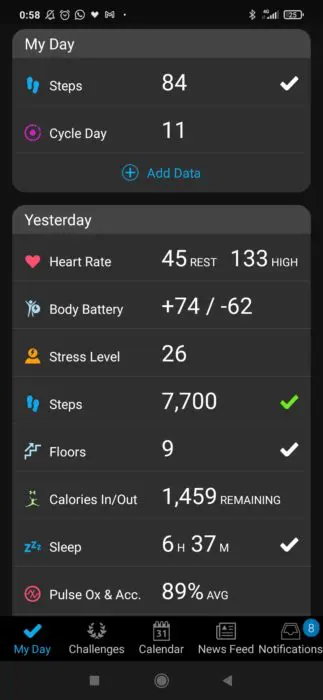
Garmin itself is a trusted brand for GPS sports watches, smart watches, and fitness trackers, and the plethora of features on the Mk2 are too many to list and deserve a separate article of their own, so I will just list my personal favorites.
I am thoroughly impressed with the entire first screen of the Garmin Connect™ app, which I use to view my heart rate, Body Battery™, stress level, steps, floors climbed, calories in/out, sleep, and respiration. I find the data incredible: I can see my level of stress reflected in the data, and the Body Battery™ feels like it accurately reflects my level of energy. Just having all of this data available at the touch of a button makes me want to be more active and healthy, and having visual goals to reach make it even more of an adventure. Each metric has a “Help” section where you can understand exactly what the Mk2 measuring and how it measures it.
Final Thoughts
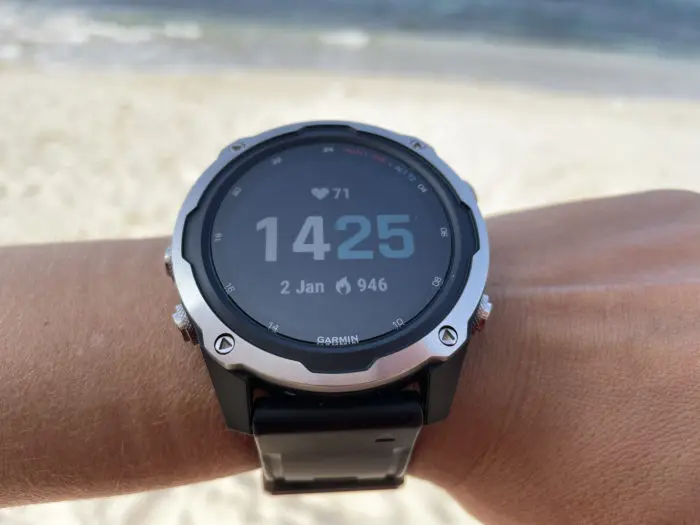
The Garmin Descent Mk2 has a hefty price tag, but the features are absolutely worth it. The dive computer aspect of the watch has excellent upgraded features from a base-level dive computer, such as HR measurement and GPS, and is clearly visible in direct sunlight and underwater, along with tide/sunrise/sunset times, which are helpful for any type of diver. The smartwatch/fitness tracking aspects of the Mk2 are without a doubt tried-and-tested and are excellent even if you are looking at these aspects alone.
In short, if you are in the market for a dive computer that also doubles as a smartwatch/fitness tracker, you cannot go wrong with the Garmin Descent Mk2. I am amazed at the capabilities of this dive computer and cannot keep myself from letting all of my freediving buddies try it and showing my students its plethora of features!
Key Features
- Dive Modes: Single-Gas, Multi-Gas, CCR, Gauge, Apnea, Apnea Hunt
- Apnea/Apnea Hunt Data Screen
- Current Surface Interval Time
- Maximum Depth
- Water Temperature
- Time of Day
- Heart Rate
- Current Location on a Map
- Apnea/Apnea Hunt In-Dive Screen
- Elapsed Time
- Current Depth
- Maximum Depth
- Heart Rate
- Ascent/Descent Rate
- Customizable Dive Modes
- Dive Log
- Surface Multi-GNSS
- Wrist-Based Heart Rate
- Pulse Ox Sensor
- Smart Notifications
- Connect IQ™ Store
Technical Specifications
- Sapphire Crystal Lens
- Stainless Steel Bezel
- Fiber-Reinforced Polymer with Metal Rear Cover
- QuickFit™ Watch Band Compatible
- 52 x 52 x 17.8mm (2.05 x 2.05 x 0.7in)
- 4” (35.56mm) Diameter
- Sunlight-Visible, Transreflective Memory-in-Pixel (MIP)
- 280 x 280 Pixels Display Resolution
- Silicone Band
- Rechargeable, Built-in Lithium-ion Battery
- Battery life
- Smartwatch: Up to 16 days
- Battery Saver Watch Mode: Up to 50 days
- Dive Mode: Up to 80 hours
- Water Rating: Dive, 10 ATM
- 32GB Memory
Price – $1,299 USD / €1,071 EUR / £968 GBP
Buy It Now
 Garmin Descent Mk2, Watch-Style Dive Computer, Multisport Training/Smart Features, Stainless Steel with Black Band
Garmin Descent Mk2, Watch-Style Dive Computer, Multisport Training/Smart Features, Stainless Steel with Black Band

